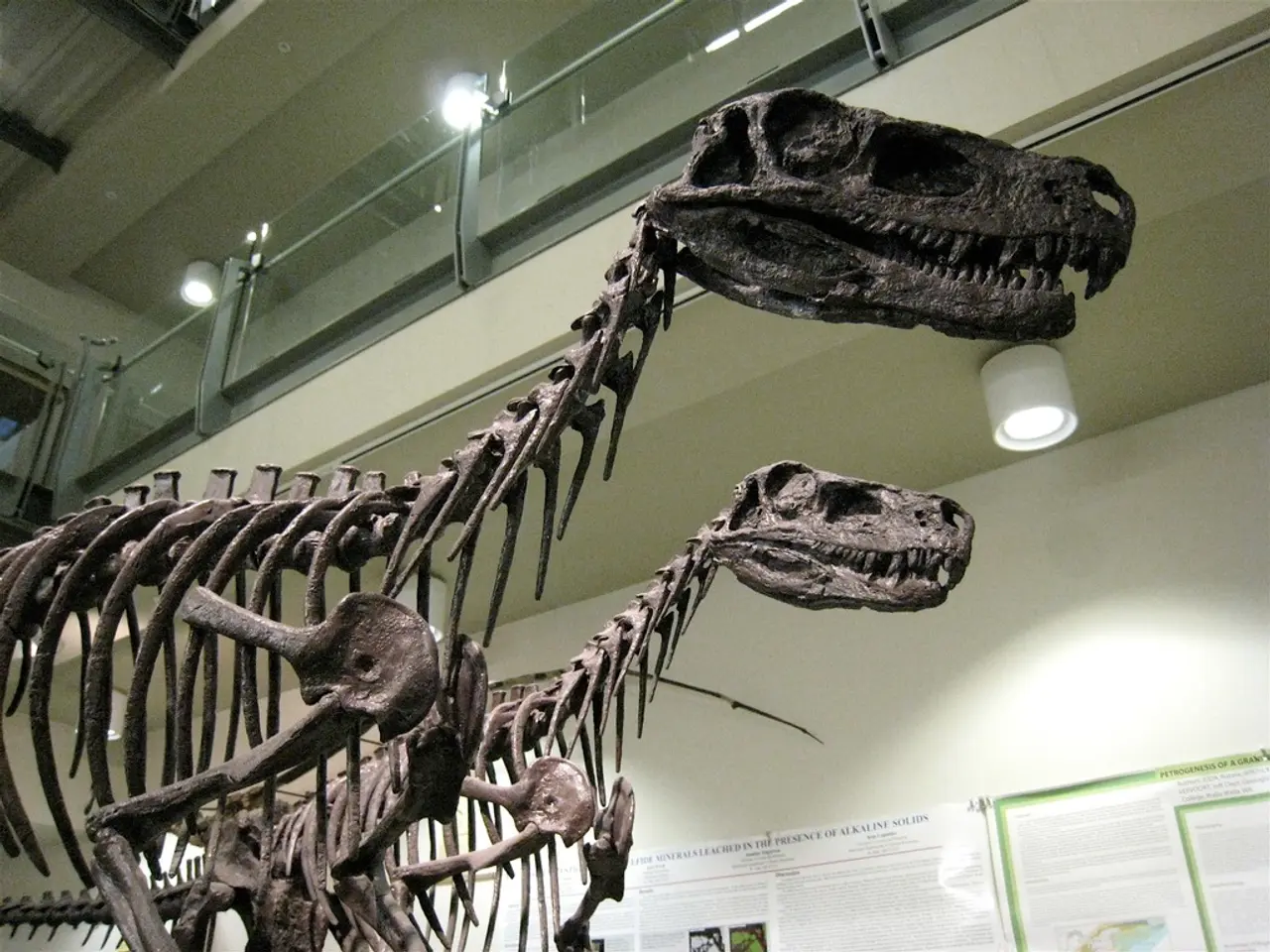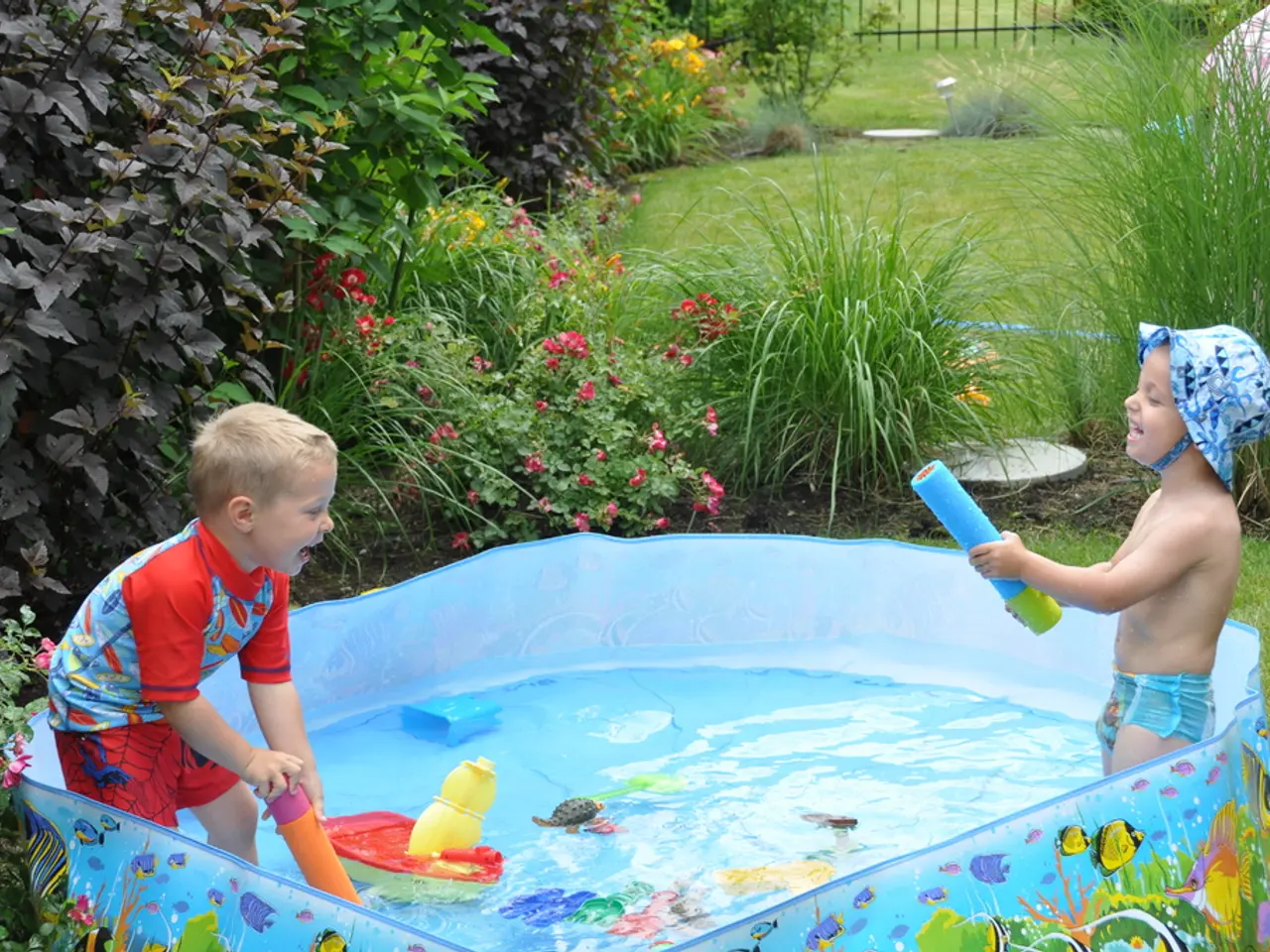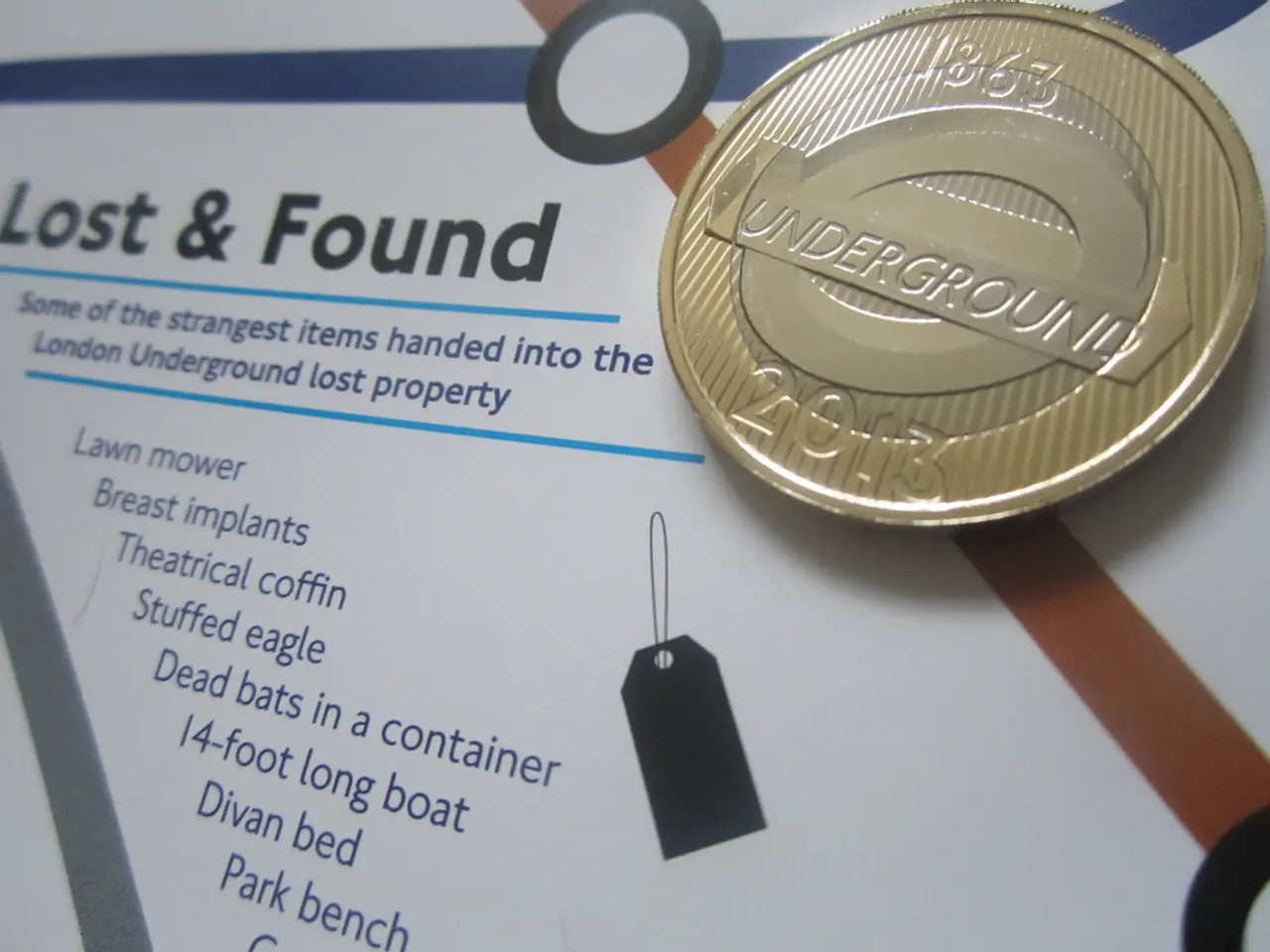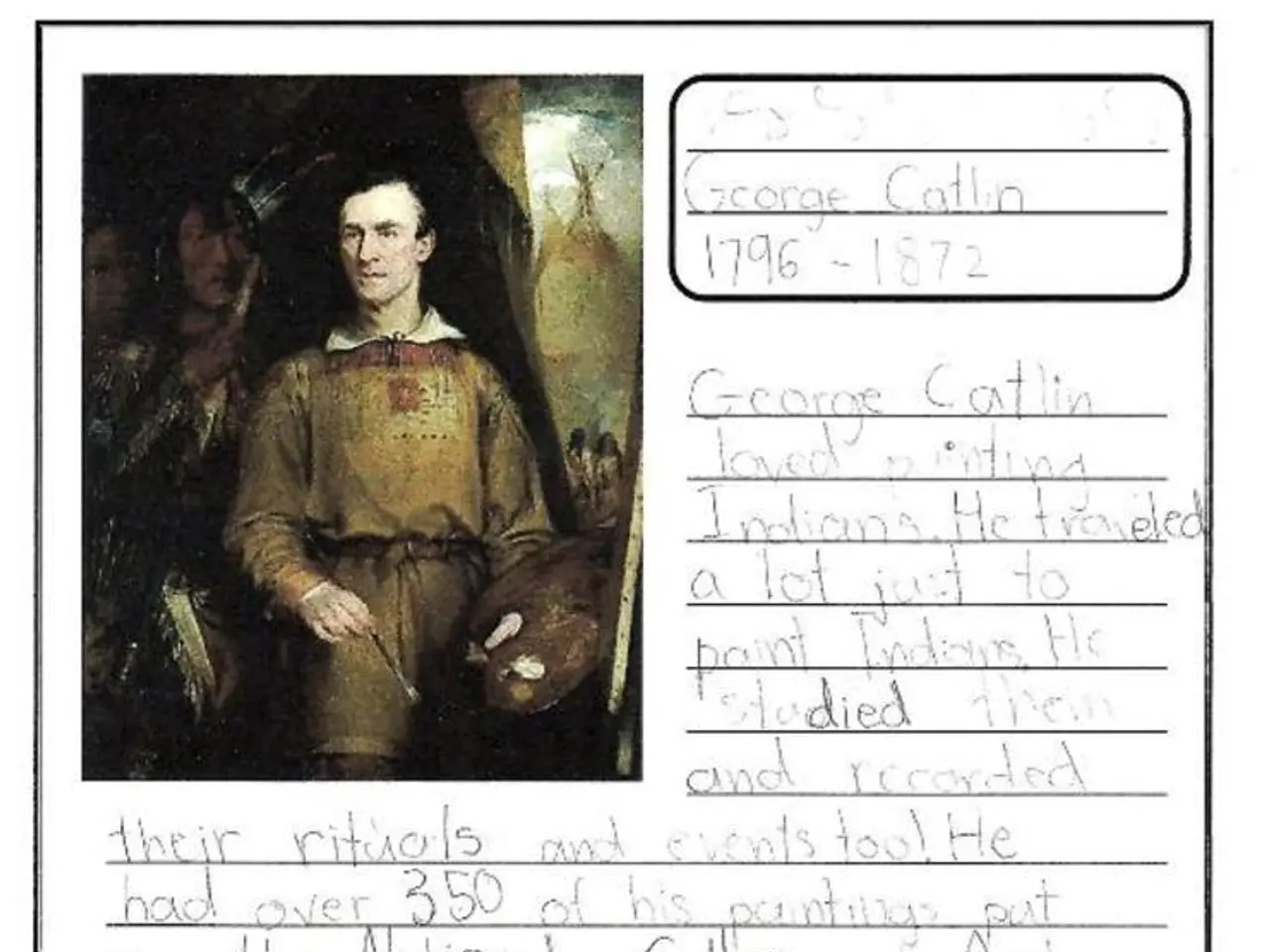Prehistoric Catastrophe at Dinosaur Nursery: Fossil Unveils Teenager Entrapped Among 24 Ancient Dinosaur Offspring
In a remarkable discovery, a fossilised scene from 120 million years ago in China's Liaoning Province has revealed a snapshot of 24 baby Psittacosaurus dinosaurs and an older juvenile. This intriguing find, often referred to as a "moment," is compared to the ancient Roman city of Pompeii, offering a rare glimpse into the lives of these prehistoric creatures.
The herd was caught mid-movement and tragically trapped by a lahar - a deadly slurry of mud, rock, and water. The spines of the dinosaurs are aligned uniformly, suggesting they died together in a volcanic mudflow.
The older juvenile, though not a parent, may have acted as a babysitter, protecting the young ones from predators. This theory is supported by the fact that the larger dinosaur was a 4-5-year-old Psittacosaurus, too young to be a parent.
The 24 smaller dinosaurs were all the same size, suggesting a single clutch. This finding leads to the possibility of some form of cooperative breeding or alloparental care among these dinosaurs. Helping rear siblings may have been practice for adulthood for Psittacosaurus, as seen in modern bird species where helper siblings protect hatchlings.
However, evidence for cooperative breeding as a widespread and common behavior in dinosaur societies is limited and remains debated among paleontologists. The Psittacosaurus fossil assemblage is one of the clearest hints toward potential cooperative care in dinosaurs, contrasting with solitary nesting seen in many reptiles. Yet, there is no direct consensus that this behavior was common across dinosaur lineages or societies.
The babysitter dinosaur was big enough to deter predators like bone-crushing dogs. This size advantage could have been crucial in protecting the younger members of the herd. However, the rarity of relevant fossil groupings and the difficulty in interpreting social behavior from fossils alone make it hard to confirm definitively whether cooperative breeding was a typical dinosaur social strategy.
This fascinating discovery adds to our understanding of dinosaur behaviour and social structures, and it remains an active area of research and debate in paleontology. While the Psittacosaurus fossil suggests that some form of cooperative breeding or brood care might have occurred in at least some dinosaur species, there is insufficient widespread fossil evidence to conclude that cooperative breeding was common in dinosaur societies overall.
- The discovery of the 24 baby Psittacosaurus dinosaurs in China's Liaoning Province has sparked new research in the field of paleontology, offering insights into prehistoric wildlife and their ecosystems.
- The unexpected find of this fossilised dinosaur herd, often likened to the ancient Roman city of Pompeii, also sheds light on medical-conditions and medical-advancements related to prehistoric living organisms.
- As lifestyle trends continue to prioritize education-and-self-development and environmental-awareness, the news of this significant find has gained widespread attention in general-news platforms and has piqued the interest of the public.
- In a field primarily focused on physical remains, this fossil assemblage provides an unparalleled opportunity to study the social structures and behaviours of these prehistoric creatures, particularly in terms of biodiversity and ecosystems.
- The Psittacosaurus fossil finds its place not only in space-and-astronomy museums but also in science exhibits, allowing the general public to gain a better understanding of our planet's history and the evolution of life on Earth.
- With the newfound discovery, some experts infer that technology can be employed in future research to uncover more about dinosaur societies and to address questions currently debated in the field of paleontology.
- The entertainment industry contextualizes this remarkable find by incorporating it into documentaries, films, and interactive experiences to engage audiences and broaden the reach of education and self-development focused on prehistoric life and our world's history.




